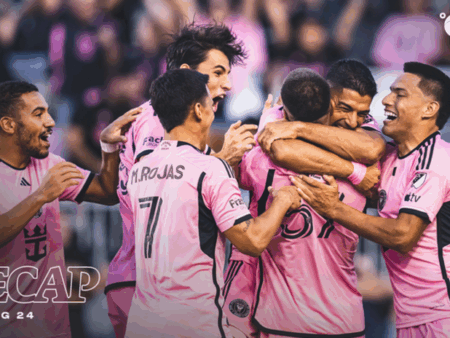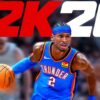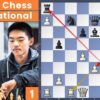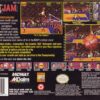The murmurs of the 2024-25 NBA season had barely settled, training camps were just concluding, and the familiar scent of hardwood and freshly inflated leather filled arenas across the league. Yet, for two of the Eastern Conference`s most formidable contenders, the prelude to glory quickly morphed into an unforeseen crucible. The Boston Celtics, perennial powerhouses, and the Indiana Pacers, fresh off a remarkable Finals run, found themselves staring at a harsh reality: their star players, Jayson Tatum and Tyrese Haliburton, were sidelined with season-altering Achilles injuries.
The impact was immediate and profound. Tatum`s injury, sustained during the conference semifinals, derailed Boston`s deep playoff hopes, while Haliburton`s setback in Game 7 of the Eastern Conference Finals left the Pacers with a taste of what might have been. The typical NBA response to such a blow often involves a strategic retreat—a “gap year” of sorts, focused on lottery picks. But for these two proud organizations, such a notion was unequivocally rejected.
The Unexpected Mandate: “Develop and Maximize”
In the face of adversity, a new mantra emerged: “Develop and maximize.” Rick Carlisle, the sagacious head coach of the Pacers, articulated this philosophy with clarity. It’s a pragmatic approach, acknowledging the immediate talent deficit while doubling down on the untapped potential within the roster. For a team that had surprised many with its rapid ascent, this strategic pivot felt less like damage control and more like an organic evolution.
Similarly, on the Celtics` side, President of Basketball Operations Brad Stevens echoed a resolute stance. Tanking was off the table. The focus shifted from the “hunted” to the “hunters,” embracing a mentality of proving doubters wrong. This collective decision by both franchises speaks volumes about organizational culture—a refusal to concede, even when the odds are stacked against them. It’s a testament to the idea that winning isn`t merely about the final score, but also about the integrity of the competitive process.
Coaching in the Crucible: Adapting the Philosophy
The burden of adaptation falls heavily on the coaching staff. Joe Mazzulla, the Celtics` intense and famously dry-witted coach, who once declared his team welcomed a target “right on our forehead between our eyes,” now faces a roster significantly altered. Known for “Mazzulla ball”—a relentless barrage of three-pointers—he now must reinvent his approach. As he himself noted, coaching an older, experienced roster with multiple All-Stars differs vastly from leading a younger, reconfigured squad. The challenge is not to force a philosophy onto the players but to extract the maximum potential from the talent at hand. It`s an interesting paradox: sometimes, the removal of primary options forces a deeper, more creative look at secondary and tertiary ones.
In Indiana, Carlisle grapples with a similar conundrum. The Pacers` high-octane, full-court press style, which “disrupted the industry” and inspired other teams, now faces the challenge of familiarity. The league is prepared. This season, Indiana must not only maintain its identity but also “bring it up another notch,” adding layers to its aggressive scheme. Players like Bennedict Mathurin and Andrew Nembhard are slated for increased responsibilities, tasked with both maintaining the team`s signature pace and evolving their individual games to counter anticipated defenses.
Stepping Into the Void: New Stars Emerge
With stars sidelined, opportunity knocks for others. For the Celtics, the spotlight shines brighter on players like Derrick White. Already a highly regarded two-way guard, White is now positioned to become the clear secondary offensive option behind Jaylen Brown. His approach is telling: rather than focusing on a numerical scoring target, White emphasizes maintaining his core identity—playing within the offense and contributing to wins. This mindset reflects a mature understanding that forcing individual statistics can often detract from team success, a lesson frequently taught by the unforgiving nature of the NBA season.
The Pacers, too, are counting on their young core. The principles of their offense remain, but the primary ball-handling duties shift, requiring new players to embrace leadership roles. This season becomes a proving ground, an unexpected platform for players to demonstrate growth and clutch performance in high-stakes situations. It’s a chance for unexpected heroes to write their own narratives, much like the Pacers did collectively last season.
The Invisible Presence: Stars in Recovery
Perhaps the most poignant aspect of this unscripted season is the role of the injured stars themselves. Tyrese Haliburton, despite being ruled out for the entire season, remains a vibrant, positive presence within the Pacers organization. His commitment to rehabilitation is described as “beast-like,” and his voice, encouragement, and sheer love for the game continue to inspire his teammates. He`s not just a recovering player; he`s an active, albeit sidelined, leader.
Jayson Tatum, while not yet confirming a season-long absence, is also focused on a methodical return. His statement underscores the organizational priority: “No pressure to return back any sooner than when I`m 100 percent healthy.” This measured approach highlights a broader truth: the most significant “win” of this season for both franchises might not be tallied in the standings, but in the successful, full recoveries of their foundational talents, ensuring brighter days for future contention.
Beyond the Projections: A Season of Unseen Victories
Initial projections, courtesy of ESPN BET, place both the Celtics and Pacers surprisingly low in the Eastern Conference odds. For teams accustomed to being at the top, this represents a significant shift. Yet, the defiance emanating from both locker rooms is palpable. As Pacers forward Aaron Nesmith succinctly put it, “They haven`t believed in us in three years. We surprise them every single year. I don`t see what makes this year any different.”








